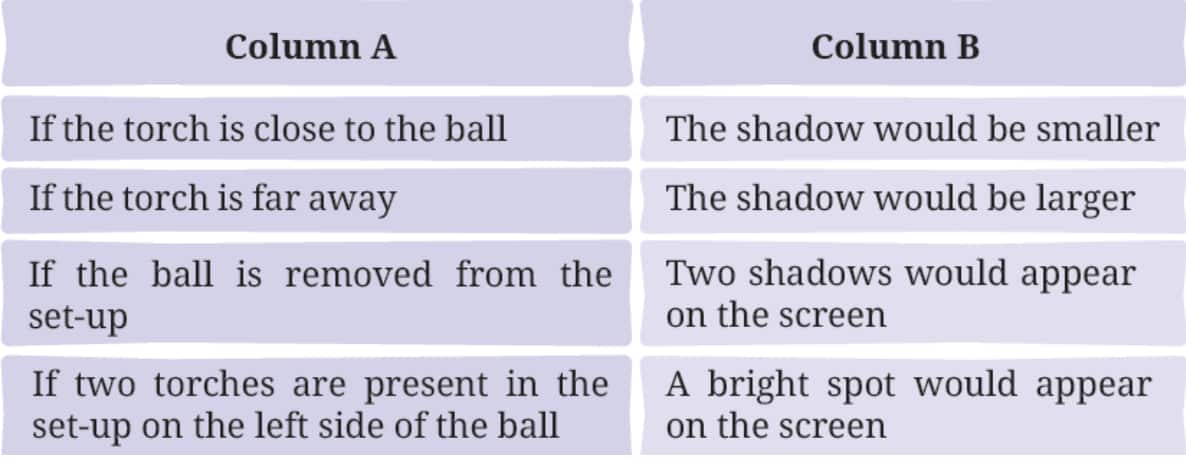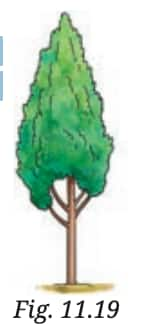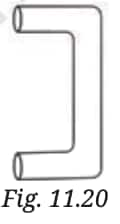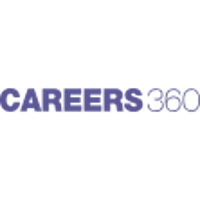Aakash Repeater Courses
ApplyTake Aakash iACST and get instant scholarship on coaching programs.
Ever wondered why we can see our reflection on a mirror but not on other objects? Chapter 11 of Class 7 Science, Light: Shadows and Reflections, explains how the reflection of light helps us see the beautiful world and create images. You will learn how light travels, and simple devices like the pinhole camera and periscope work in a very easy way. The NCERT Solutions for Class 7 Science Chapter 11 help you to understand key concepts like reflection, shadows, and image formation.
.jpg)
NCERT Solutions of Class 7 Light: Shadows and Reflections prepared by experts at Careers360 gives deep insight into the chapter and allows students to check their learning. You can find the topics covered in a convenient location, along with a brief explanation of the important concepts. These NCERT Solutions also contain the approach to learning the chapter, which helps students not feel overwhelmed by the ideas presented in the chapter.
1. Which of the following are luminous objects? Mars, Moon, Pole Star, Sun, Venus, Mirror
Answer: The luminous objects are the Sun and the Pole Star. Mars, Moon, Venus, and Mirror are non-luminous objects because they do not emit their own light; they reflect light from other sources.
2. Match the items in Column A with those in Column B.

Answer:
| Column A | Column B |
|---|---|
| Pinhole camera | Forms an inverted image |
| Opaque object | Blocks light completely |
| Transparent object | Light passes almost completely through it |
| Shadow | The dark region formed behind the object |
3. Sahil, Rekha, Patrick, and Qasima are trying to observe the candle fl ame through the pipe as shown in Fig. 11.16. Who can see the flame?
Answer:
Rekha can see the candle flame because she is looking through a straight pipe, and light travels in a straight line. Sahil, Patrick, and Qasima cannot see the flame because their pipes are bent.
4 . Look at the images shown in Fig. 11.17 and select the correct image showing the shadow formation of the boy.
Answer: The correct image is (b). The shadow of the boy should be a dark silhouette with the same shape as the boy, formed on the screen behind him when light is blocked.
5 . The shadow of a ball is formed on a wall by placing the ball in front of a fixed torch as shown in Fig. 11.18. In scenario (i), the ball is closer to the torch, while in scenario (ii) the ball is closer to the wall. Choose the most accurate representation of the shadows formed in both scenarios from the options provided (a and b).

Answer: The correct option is (a). In scenario (i), when the ball is closer to the torch, the shadow is larger. In scenario (ii), when the ball is closer to the wall, the shadow is smaller.
6. Based on Fig. 11.18, match the position of the torch in Column A with the characteristics of the ball’s shadow in Column B.

Answer:
| Column A | Column B |
|---|---|
| If the torch is close to the ball | The shadow would be larger |
| If the torch is far away | The shadow would be smaller |
| If the ball is removed from the set-up | A bright spot would appear on the screen |
| If two torches are present in the set-up on the left side of the ball | Two shadows would appear on the screen |
7 . Suppose you view the tree shown in Fig. 11.19 through a pinhole camera. Sketch the outline of the image of the tree formed in the pinhole camera

Answer:
The image of the tree in a pinhole camera will be upside down (inverted). The outline will show the tree with its top pointing downward and the trunk pointing upward, maintaining the same shape and colours but flipped vertically.
8. Write your name on a piece of paper and hold it in front of a plane mirror such that the paper is parallel to the mirror. Sketch the image. What difference do you notice? Explain the reason for the difference.
Answer:
The image of your name in the mirror will appear reversed from left to right (laterally inverted). For example, if your name is “RAJ,” it will look like “JAR” in the mirror. This happens because a plane mirror causes lateral inversion, where the left side of the object appears as the right side in the image.
9. Measure the length of your shadow at 9 AM, 12 PM, and 4 PM with the help of your friend. Write down your observations: (i) At which of the given times is your shadow the shortest? (ii) Why do you think this happens?
Answer:
(i) The shadow is the shortest at 12 PM.
(ii) This happens because, at 12 PM, the Sun is directly overhead, so the light rays are almost vertical, making the shadow shorter. At 9 AM and 4 PM, the Sun is lower in the sky, so the light rays are slanted, causing longer shadows.
10 . On the basis of following statements, choose the correct option. Statement A: Image formed by a plane mirror is laterally inverted. Statement B: Images of alphabets T and O appear identical to themselves in a plane mirror.
(i) Both statements are true
(ii) Both statements are false
(iii) Statement A is true, but Statement B is false
(iv) Statement A is false, but Statement B is true
Answer:
(i) Both statements are true. Statement A is true because a plane mirror causes lateral inversion. Statement B is true because the alphabets T and O are symmetrical, so their images in a plane mirror look identical to the original letters.
11 . Suppose you are given a tube of the shape shown in Fig. 11.20 and two plane mirrors smaller than the diameter of the tube. Can this tube be used to make a periscope? If yes, mark where you will fix the plane mirrors.

Answer :
Yes, the tube can be used to make a periscope by placing two plane mirrors at 45° angles, one at the top to reflect light downward, and one at the bottom to direct it to the eye.
12 . We do not see the shadow on the ground of a bird fl ying high in the sky. However, the shadow is seen on the ground when the bird swoops near the ground. Think and explain why it is so.
Answer:
A bird flying high casts a large, faint shadow that's hard to see. When it flies close to the ground, the shadow becomes smaller, sharper, and clearer.
The topics covered in Chapter 11 of class 7 science NCERT are as follows-
Objects like the sun bulb, and candle emit their own light. These are called luminous objects.
Yes, That’s why we get sharp shadows and can aim torches easily.
Shadows form when light is blocked by an opaque object. They are dark and shaped like the object.
The Bouncing back of light is known as the reflection of light.
These images are virtual, upright, same-sized—but left and right are reversed!
A simple device that forms an inverted image using a small hole and screen.
We can use mirrors to build fun tools like periscopes and kaleidoscopes.
Light: Shadows and Reflections introduces the concept of light and its different properties. For this chapter, it is important to understand the sources of light, how it travels and how it interacts with different materials. Using these concepts, we can explain the phenomena of light, including shadow formation, reflection and image creation. It is also crucial to understand the various devices based on this, such as the pinhole camera, periscope and kaleidoscope.
The main sources of light are natural sources like the Sun and artificial sources like bulbs, candles, and torches.
Shadows are formed when an opaque object blocks the path of light, creating a dark area on the surface behind it.
The natural sources of light are; lightning, stars, the sun, etc
Yes, light always travels in a straight line. This is why we can see sharp shadows and use devices like the pinhole camera.
Transparent materials let all light pass through (like glass), translucent materials let some light pass (like frosted glass), and opaque materials block all light (like wood).

Take Aakash iACST and get instant scholarship on coaching programs.

This ebook serves as a valuable study guide for NEET 2025 exam.

This e-book offers NEET PYQ and serves as an indispensable NEET study material.

As per latest syllabus. Physics formulas, equations, & laws of class 11 & 12th chapters
As per latest syllabus. Chemistry formulas, equations, & laws of class 11 & 12th chapters
As per latest 2024 syllabus. Study 40% syllabus and score upto 100% marks in JEE